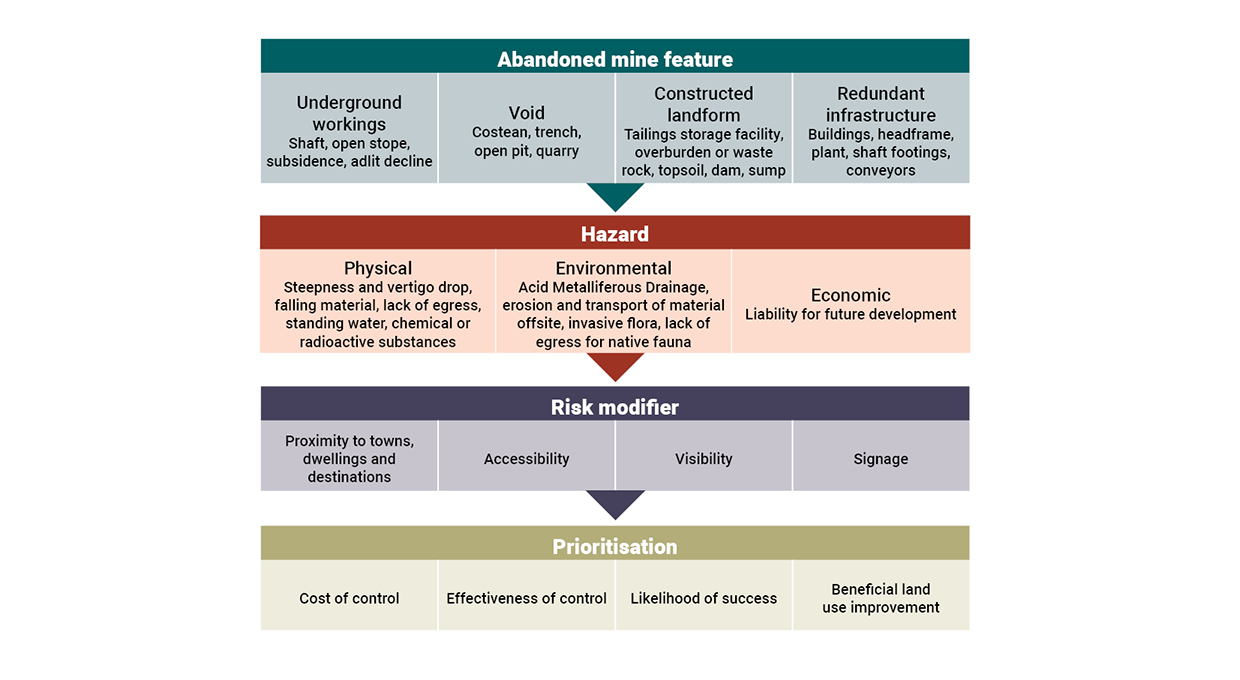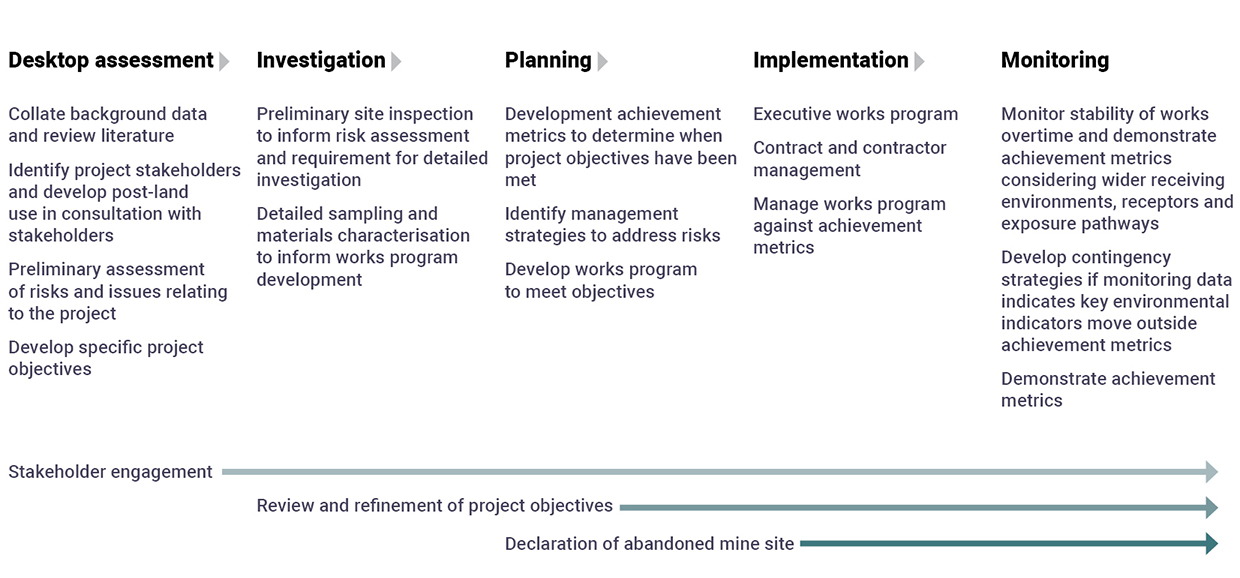New projects under the Abandoned Mines Program are prioritised following a risk assessment and prioritisation process that has been developed in line with the Abandoned Mines Policy. This process aims to systematically identify and characterise hazardous sites, assess the associated safety and/or environmental risks and prioritise works with consideration to potential risk mitigation measures and beneficial end land use. The process draws predominantly on survey data collected by Geological Survey of Western Australia and incorporates community and stakeholder nominated high-risk abandoned mine features for consideration. Risk assessment outcomes will be combined with a range of other considerations such as likelihood of success, beneficial land use, cost effectiveness and potential for long term benefit to determine an overall site priority.

Project implementation framework
Once a project site has been selected, the Abandoned Mines Program uses the project implementation framework to develop and implement project-specific outcomes to reduce risk associated with the site’s abandoned mine features. The framework emphasises stakeholder engagement at each stage of an iterative process to establish project objectives and ensure site risk is mitigated in line with stakeholder determined post-project land use.
Stakeholder engagement is a key aspect of the program and stakeholder input is sought for each project to ensure concerns and expectations are identified and incorporated.

For further information on the risk assessment and prioritisation process, a paper presented by the department at Mine Closure 2019 is available for download from the conference website.
